
























Still a tried-and-true finish, chrome is no longer the only finish design to choose from anymore with more and more being released each year.




n Kitchen & Bath Trends

n Plumbing Technical Training Day Supplement
n Changes coming to the refrigeration sector
n Federal budget update
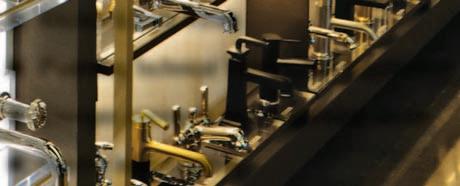






PVI’s Dynamic water heaters are engineered to deliver the perfect balance between BTU input and storage –you’ll get greater BTU input for quick reaction, an optimized storage buffer for extra power when needed, and superior temperature control at lower operational costs.
AquaPLEX combines a revolutionary, engineered material with a highly specialized process to create the most reliable and long-lasting water heaters in the industry.




• Ultra-durable construction extends product life and decreases unscheduled maintenance
• Protects against chloride stress corrosion cracking
• Highly resistant to aqueous corrosion in potable water at any temperature
• Eliminates the need for tank linings or anode rods








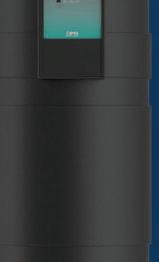





Missed


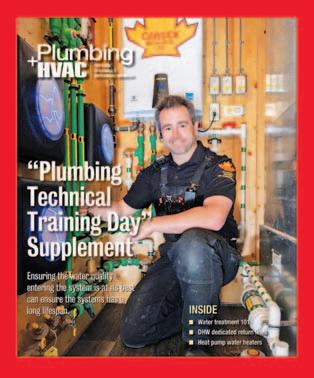



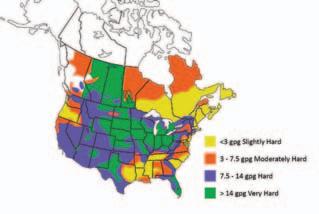


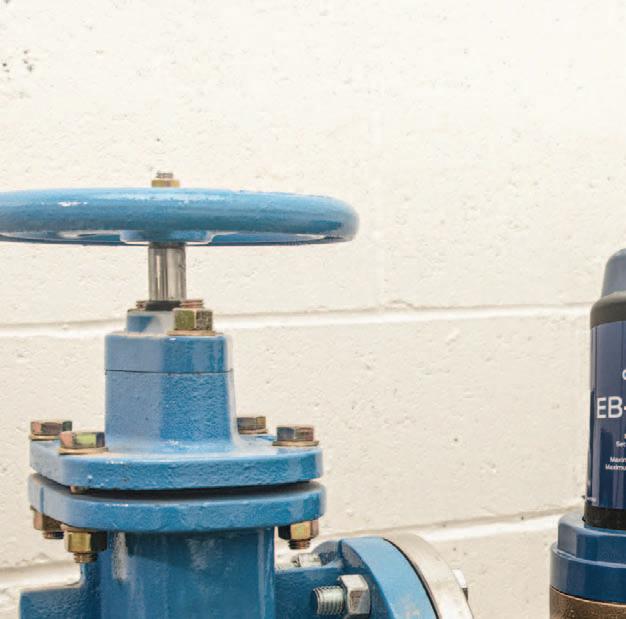






It’s an absolute wonder being able to witness the development, acceptance, and then installation of new technology. Maybe it’s partially because the vast majority of my childhood was spent in an era where every year there was something new and exciting being released. Or maybe it’s just because technology fascinates me. Who knows. But the one thing that is certain is that new technology is coming fast and it’s time to learn or else you might be left behind.
During the end of May, I was invited to attend Wolseley’s new market distribution centre grand opening, located in Brampton, Ont. At the event, I was able to see firsthand the changes that are coming to the distribution chain in Canada. Not only were there ways for customers to be able order and pick-up their products without having to interact with anyone, but there were some robotics that would find the product on the shelf that was required as part of an order, and bring it down to the operator. It kind of felt like we were in a giant vending machine or one of those parking garages that will bring your car down for you from your dedicated parking spot.
To memory, this was the first time that I was able to witness firsthand these automated racking systems in action. But I do know that others exist in the world of distribution centres. For instance, members of the
Plumbing & HVAC team were able to see Noble’sautomatedapproachtoitswarehouses at its Toronto, Ont. location.
There’s something just so fascinating when it comes to the automation process within distribution centres and the manufacturing sector. Recently, I had the privilege of attending the Canadian Water Quality Association’s mid-point spring conference and annual general meeting in Kitchener, Ont. The second day of the conference saw all attendees sitting comfortably in a tour bus driving around southern Ontario to see various water quality specific tours. The first was to the Walkerton Clean Water Centre, followed by a tour and one or two beers at Cowbell Brewery. But the last stop on the tour was to Compass Minerals, where we were able to see part of the packaging process of the minerals the companies mines, and which is used in water softeners.
With so much new technology in the industry, it can be overwhelming and nerve wracking trying to keep up. I can’t help but also wonder what is next. Is it automated trucks? I suspect it’ll involve some type of artificial intelligence. Or maybe it’s an approach that no one has even thought about trying yet. But whatever it is, I can honestly say that I am excited to see.

May/June 2024 Volume 34, Number 3 ISSN 1919-0395
Publisher
Mark Vreugdenhil (289) 638-2133 ext.1
Cell: (416) 996-1031
mark@plumbingandhvac.ca
Editor Leah Den Hartogh (289) 638-2133 ext. 2
Cell: (289) 830-1217
leah@plumbingandhvac.ca
National Sales Manager
Chris Luttrell (289) 797-2138
Cell: (365) 662-4112
chris@plumbingandhvac.ca
Assistant Editor
Francesco Lo Presti (289) 638-2133 ext. 3
francesco@plumbingandhvac.ca
Contributing Writers
Glenn Mellors, Greg Scrivener, Michael Ridler, Ron Coleman
Design and Production
Tim Norton/Janet Popadiuk production@plumbingandhvac.ca
All articles and photos by Plumbing & HVAC staff unless noted.
PLUMBING & HVAC Magazine is published seven times annually by Marked Business Media Inc. and is written for individuals who purchase/ specify/approve the selection of plumbing, piping, hot water heating, fire protection, warm air heating, air conditioning, ventilation, refrigeration, controls and related systems and products throughout Canada.
Marked Business Media Inc.
286 King Street W, Unit 203, Oshawa, ON L1J 2J9 Tel: (289) 638-2133
Postmaster: Send all address changes and circulation inquiries to: Plumbing & HVAC Magazine, 286 King Street W, Unit 203, Oshawa, Ontario, Canada L1J 2J9. Canadian Publications Mail Sales Product Agreement No. 43029513. Postage paid at Toronto, ON.
Copyright 2024. The contents of this magazine may not be reproduced in any manner without the prior written permission of the Publisher.
A member of:
• Canadian Institute of Plumbing & Heating
• Mechanical Contractors Association of Canada
• Ontario Plumbing Inspectors Association
• American Society of Heating Refrigerating & Air Conditioning Engineers
• Heating Refrigeration and Air Conditioning Institute of Canada
• Refrigeration Service Engineers Society of Canada


Industry professionals welcome the 2024 Federal Budget with open arms, with the budget having a large focus on housing and increasing housing supply, but argue that more investment will be needed in order to address infrastructure needs associated with the housing crisis.
On April 16, Chrystia Freeland, deputy primeministerandministeroffinance,tabled the 2024 Federal Budget: “Fairness for Every Generation” This year ’ s budget focuses on housing, affordability, economic growth, and the younger generation.
“The Canadian Institute of Plumbing and Heating (CIPH) welcomes the federal budget’s focus on building homes and related infrastructure in communities across Canada. More emphasis on regulatory harmonization could also help to get more homes built faster
and grow our communities,” says Satinder Chera, CEO of CIPH. “We want to work with all levels of government to promote our critical role in the built environment”
The budget shows a $40 billion deficit for the 2023-2024 fiscal year, forecasting smaller deficits each year, declining to $20 billion in 2028-2029, reports the Heating, Refrigeration, and Air Conditioning Institute of Canada (HRAI). Debt-toGDP ratio is projected to improve slightly from 41.9 per cent this fiscal year to 39 per cent in 2028-2029. As a percentage of GDP, the deficit will be 1.3 per cent in the current fiscal year and is projected to decline to 0.6 per cent in the fifth year of the forecast.
The current federal government is aiming to build 3.87 million homes by 2031 through a series a tax breaks, incentives, and loans. “To achieve this target, housing starts will need to ramp up significantly to an average of
There are concerns over certain building code changes coming that might increase the cost of housing, which in turn increases the market value.
550,000 per year, almost double the current pace,” explains HRAI.
More money will be going back into the new Canada Greener Homes program. An additional $800 million will be allotted over five years starting in 2025-2026. The update to the program will see direct support to installation of energy efficient retrofits for Canadians with low- to median-incomes. The new program will be co-delivered with provincial and territorial partners.
An additional $73.5 million over five years, starting in 2024-2025, is set to modernize existing energy efficiency programs that offer tools to building owners like the Energy Star portfolio manager. “This funding will also spur the development of better, more ambitious building codes to further reduce emissions and lower energy bills. The federal government will encourage provinces and territories to adopt these top tier building codes,” reports HRAI.
There is a push to make movement between provinces and territories for internationally educated and certified tradespeople easier. In addition, the federal budget sets out a plan to create 90,000 youth job placements and employment support opportunities.
The Ontario government challenged many aspects of the federal budget, including no
Continued on page "8"
Continued from page "7"
plans to scrap the carbon tax. “Today’s budget was a missed opportunity to scrap the costly federal carbon tax, which is making everything from gasoline to groceries more expensive,” shares Ontario in a press release.
“Our government continues to urge the federal government to put more money back into peoples’ pockets by eliminating the carbon tax once and for all, particularly at a time when it is contributing to high inflation.” The province was satisfied with the budget’s response to more housing funding.
The Residential Construction Council of Ontario (RESCON) reiterated the provinces’ sentiment that the budget included positive measures directed at the housing market, but that there still needs to be more initiatives supporting first-time homeowners. “We commend the federal government for seriously trying. There are positive measures here to assist purposebuilt rental housing supply That much is encouraging,” says Richard Lyall, president of RESCON “But there is no relief for firsttime buyers who have been pushed out of the market. They are being taxed on new housing at rates which would have crushed their parents and grandparents.
While there is an overall appreciation for the significance placed on the housing strategy within the 2024 budget, there is concern that not enough money has been allotted. According to the Canadian Construction Association (CCA), the Federation of Canadian Municipalities shows that each new housing unit requires $107,000 in public infrastructure investment, which means an additional $128 billion is needed to build, support, andconnectthesehomestoessential housing enabling infrastructure.
“This is a major shortfall in the investment needed,” reports the CCA in a statement. Additionally, the association is concerned that measures that would ease lending for homebuying and rezoning would only hinder the process in the long-term.
“Budget 2024

The 2024 Federal Budget was released on April 16 and largely highlights housing specific initiatives.
sets a bold objective to help Canadians buy homes but misses the mark on delivering sufficient investment and a plan to ensure a steady flow of funds to address our nation’s infrastructure challenges,” says Mary Van Buren, president of the CCA “While we acknowledgesomeinitiatives,suchasfunding for creating affordable apartments, training and recruiting more workers, and upgrading water and wastewater systems, the conditions attached, and lack of strategic vision are concerning”
The CCA is calling upon the federal governmenttoshiftitsstrategywhenitcomes to infrastructure and housing to something that aligns all levels of government.
The Canadian Home Builders’ Association (CHBA) is pleased with the federal budget’s measures dedicated to lessening the housing
supply deficit. In addition, “Actions to support and incent the streamlining of approval processes at the municipal level through the Housing Accelerator Fund are welcome,” reports the CHBA.
“The federal government has indicated with this budget that it intends to prioritize housing supply and affordability, including helping those Canadians who want to own a home fulfill that aspiration. CHBA and our members are eager to help make that happen,” shares Kevin Lee, CEO of CHBA.
The association commends the government’s intention to develop an industrial strategy for homebuilding.
“CHBA welcomes the first funding initiatives to support this, along with lowcost financing for factory-built homes.
All around, the CHBA had mostly praise for the 2024 federal budget. They were happy to see that it included measures that would promote the skilled trades to high school students and facilities labour market integration of new Canadians.
According to the Mechanical Contractors Association of Canada (MCAC), there was plenty of good news when it comes to the construction sector. But not necessarily a lot of surprises. There was one thing for certain, the construction industry is going to be the focus, which is very positive feedback, shares Ken Lancastle, COO at MCAC.
The one mark that CHBA cautioned about was the potential increase to construction costs that would be indued based upon some of the changes made to the building code. They caution the proposed taxing of vacant land. The CHBA makes note that there are other measures in the budget that are aimed at reducing the costs of construction, including financing measures “All measures to reduce costs are important, as those cost reductions, just as is the case with cost increases, are passed directly through to the consumer. In simple terms, higher construction costs, financing costs and taxes mean more expensive housing; lowering them means less expensive housing for both home buyers and renters,” reports the CHBA. www.plumbingandhvac.ca



















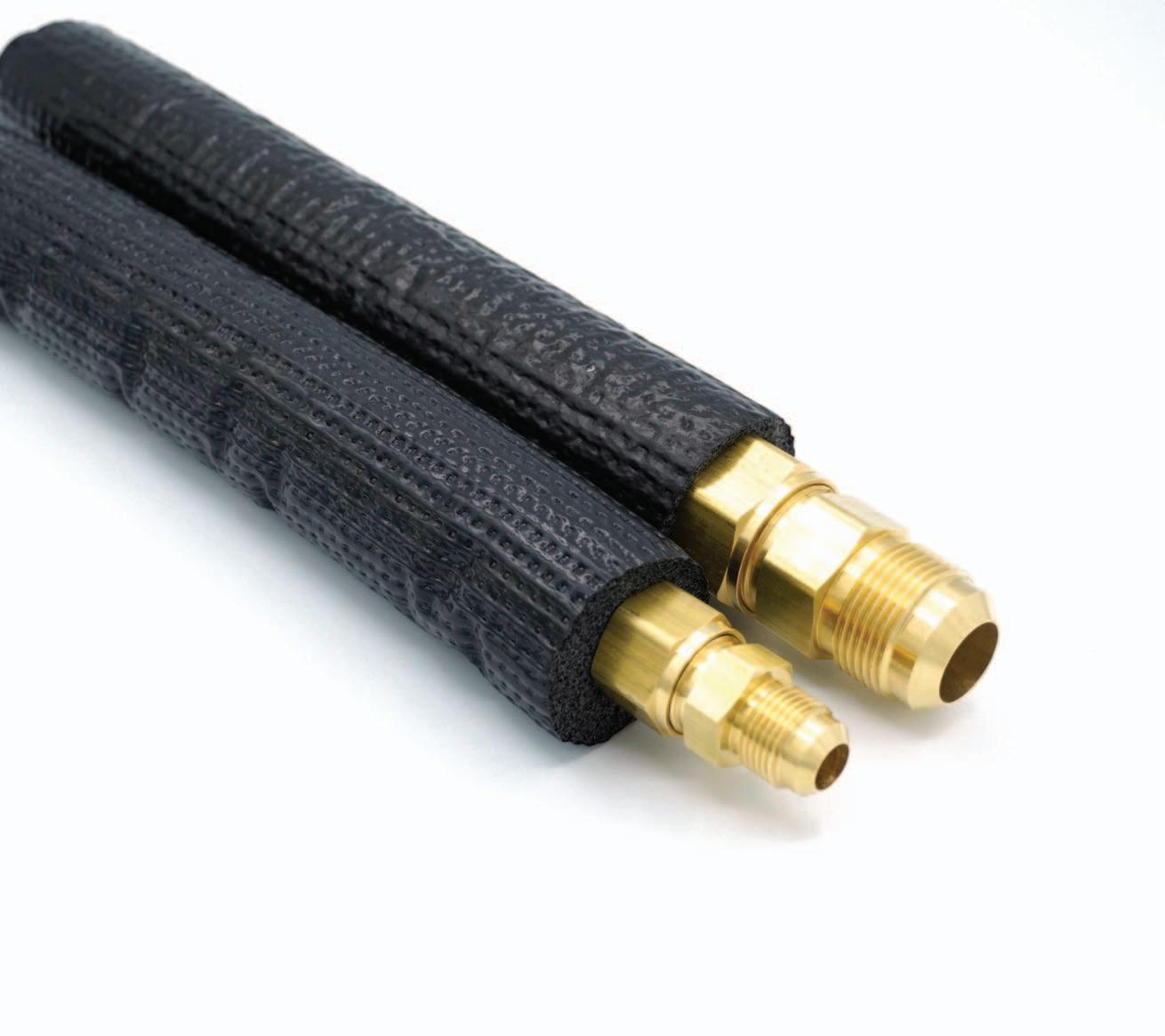
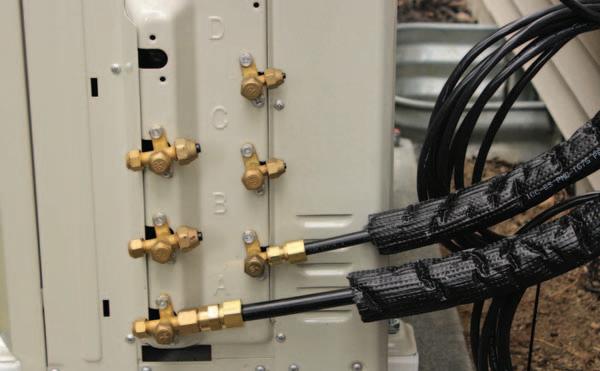
A new challenge is entering the commercial heat pump rooftop unit (RTU) market in the United States.
The United States Department of Energy (DOE) is launching its Better Buildings Commercial Building Heat Pump Accelerator. The initiative will see corporations and manufacturers create higher-efficiency and life-cycle costeffective heat pump RTUs, and commercial organizations will evaluate and adopt nextgeneration heat pump technology
It is estimated that RTUs can reduce greenhouse gas emissions and energy costs by up to 50 per cent, compared to conventional RTUs However, fewer than 15 per cent of commercial buildings in the US. currently have heat pumps
The campaign aims to have energy-efficient heat pump RTU units available to market by 2027. If deployed at scale, these RTUs could save American businesses and commercial entities $5 billion on utility bills yearly.
Partnering with the U.S. National Renewable Energy Laboratory and other laboratories, the initiative will see manufacturers developing new prototypes and testing the performance and durability of the products.
The laboratories will also lead field validations to help manufacturers produce more efficient and cost-effective heat pump rooftop units with longer life cycles.
Two programs are available in the Better Buildings Commercial Heat Pump Accelerator: the Commercial Building Heat Pump Technology Challenge and the Commercial Building Heat Pump Campaign.
The Heat Pump Technology Challenge will see manufacturers partner with the DOE and its national laboratories to create emissionseffective heat pump rooftop units that meet
an advanced technology specification and will create prototypes, test the performance and durability of the products, and lead field validations with commercial partners. The goal is to have these units available for purchase by 2027.
The Heat Pump Campaign will see the DOE and its national laboratories provide building owners and operators with resources and guidance on deploying heat pump technology to support site and portfolio-level installations.
In addition, the campaign will also provide technical assistance, such as case studies that showcase how building owners have successfully implemented heat pump RTUs to achieve their decarbonization goals and peer-to-peer learning on topics such as manufacturers’ equipment specifications and validation activities.
Participating corporations include Amazon, Ikea and Target. Participating equipment manufacturers include AAON, Carrier, Lennox, Rheem, Trane, and York.



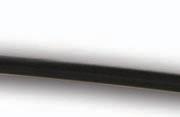





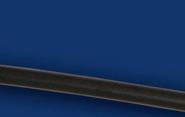













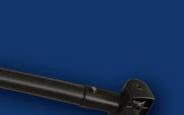












































Fixture colour selections have grown in the last few years and are very seductive to homeowners.By Kayla Leone

Once someone has made the switch to touchless technology, it tends to be hard going back.
As a woman with over 20 years of experience in plumbing, and having worked with WM Schmidt for seven years, I can honestly say it is still a thrill when new technology comes out and I get to try it myself. As a new homeowner, I recently went through the selection process and can empathize with the overwhelming choices out there, such as water detection systems, touch/sensor faucets, or coloured fixtures.
Sometimes, they are worth the money,
and sometimes not. Many insurance companies will offer discounts if some type of leak detection/prevention system has been installed in the home. Personally, I have had the privilege of owning a leak detection monitoring system, which requires power and Wi-Fi to operate. In addition, I have installed both touchless faucets and wave sensor faucets in my own kitchen from two different manufacturers. Like anything, there are pros and cons to technology, from replacing batteries in the sensor faucet so that the chores can still be completed, to learning that touchless faucets can turn on if there is a warm breeze or if it’s not grounded properly during installation.
It is with this knowledge from my own personal experience, and 20 years within the industry, that I help advise homeowners on a daily basis and guide them through their plumbing selections and finding which new technology is right for them.
Integrating smart technology into one’s daily life is one way to make life easier and can help save on utility bills and insurance. Did you know that water is the second most damaging element to a home and can go undetected until there is major damage?
Apart from the obvious signs, there are
Continued on page “15”








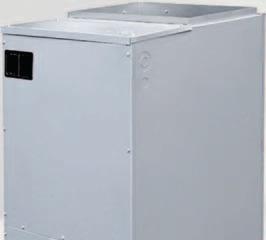





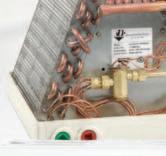





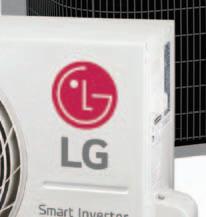








Continued from page “13”
hidden dangers and damages that can come with a water leak going undetected, such as mould. So, one game-changing product that comes to mind is a water usage monitoring system. There are many brands to choose from on the market. Many water usage monitoring systems will feature learning technology, which monitors the household’s usage and functions. There are some products that will connect to an app and will send notifications if there is water moving through the home when it shouldn’t be. Not only that, but it will also shut off the water access to the home if there is a leak detected.
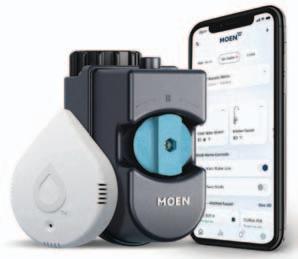
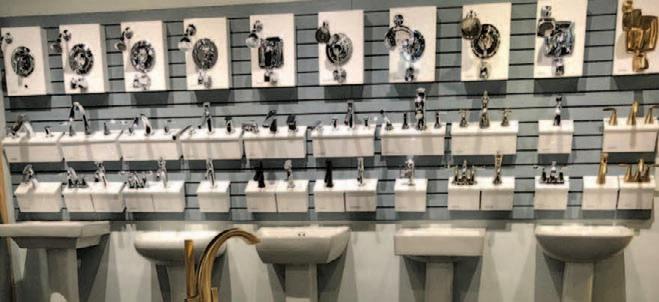

In addition to the point-of-entry water monitoring systems, there are independent sensors that can be located through the home, where they are commonly installed near fixtures or mechanical rooms. It is like having someone house sit for you when you’re not home.
Did you know most homeowners never notice that their toilets are seeping past the seal in the tank, which adds costs to their utilities? They are literally flushing money down the toilet. In addition, with the rising cost of insurance, it is a nice perk to have any water monitoring system in place, as early detection is key. Most insurance companies will even offer a discount on the premium. I recently found out when building my home, and my insurance company asked whether a leak detection system was being installed.
Aside from practical home protection, smart faucets are also a growing trend. The traditional and common touch faucet remains popular, with touchless becoming more prevalent. There are some on the market that include run timers, so when, in a busy home with little ones around who don’t always shut the water off completely, the faucet will turn off automatically.
Once someone has owned a touchless faucet, it’s hard to go back. They will find themselves tapping other people’s faucets or waving their hands, wondering why it isn’t turning on.
It is highly entertaining when they catch themselves doing it and having that “oh yeah”
moment. As humans, we tend to be creatures of habit; things become like second nature very quickly.
Lastly, the fixture colour selections have also grown in the last few years and are very seductive to homeowners. I have had to caution customers as these typically come with significant price tags; though pretty, they can age faster than classic chrome. A trend is not always a friend.
For instance, matte black is the most requested colour, but it tends to show the most wear and tear.
New home construction is always looking for ways to protect homes and improve efficiencies, and many builders are adding these as a standard.
I cannot stress enough how important it is to do your homework, read the reviews, and know your options. What works for one home may not be ideal in another. I know I’ll be watching to see what comes next. :

Kayla Leone, an experienced plumbing professional at WM Schmidt Mechanical, serves as operations supervisor and plumbing selections consultant. With over two decades in the industry, she ensures high standards in new home construction through her expertise in project management and client support, contributing to the company’s reputation for excellence.

FGI Industries, East Hanover, New Jersey, introduces its Flush Guard anti-overflow toilets to market. The Flush Guard toilets feature three anti-overflow holes in the bowl and separate drain holes in the rim, allowing the rising water to escape to the main sewer drain through a secondary path. The toilets are self-cleaning, meaning the secondary trap way is washed after every flush.
FGI Industries www.flushguardtoilets.com

Moen, Oakville, Ont, debuts a new trio of kitchen products. The Smyth kitchen faucet collection is available in pulldown faucets, smart faucets, pulldown faucets with MotionSense Wave, and pulldown bar faucets. The Haelyn pulldown kitchen faucet with ColorCue technology integrates hydro-powered LED sensors on the pulldown wand to provide users with a visual indicator to see the temperature of the water coming out of the faucet. Moen’s Flo Smart water monitor tracks the water in the home and sends alerts if it detects any potential issues or leaks. The monitor can also automatically shut off the water to prevent minor leaks.
Moen www.moen.com

Kohler, Milwaukee, Wisconsin, introduces its newest all-in-one hand shower cleansing device. The SpaViva is a multifunction hand shower with two spray experiences, full coverage with Katalyst and Microbubble. The Katalyst features air-induction technology that delivers a drenching spray experience, while the Microbubble features a spray that infuses tiny bubbles into the water. The SpaViva handle can extend 2-5/8inch (67 mm) with the push of a button. Kohler www.kohler.com
GE Appliances, Toronto, Ont, debuts its newest two-in-one washer and dryer, eliminating the need to transfer clothes from one unit to the next. The
GE Profile 5.5 utilizes ventless heat pump technology, making it 50 per cent more energy efficient while drying. The washer and dryer can hold detergent and softener for up to 32 loads and features a fast airflow drying system.
GE Appliances www.geappliances.ca
Pfister Faucets, Mississauga, Ont, introduces its Tenet line of kitchen faucets with a pulldown handle with spray and stream. The faucets have a GPM flow rate of 1.8, magnetic docking, and advanced ceramic disc valve technology. The faucets can be installed in countertops with either one, two, three or four holes.

Pfister Faucets www.pfisterfaucets.com
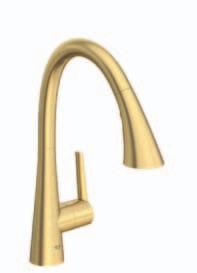

Grohe, Mississauga, Ont, announces the addition of two new finishes, brushed cool sunrise and matte black. The brushed cool sunrise finish offers a delicate, warm glow, while the matte black finish offers a contrasting and bold appearance. Both finishes can be applied to select collections and products such as faucets, spouts, shower systems, accessories, and trims.
Grohe www.grohe.ca

Airmada, Lincoln, Nebraska, debuts its AirPocket slide-in shower door. Made of stainless steel and designed to replace a traditional swinging door, the AirPocket traps heat and humidity in the shower area, allowing users to transform their shower into a combination walk-in and steam shower. The AirPocket also features an AirJet shower drying system that eliminates mould and mildew.
Airmada www.airmadadry.com



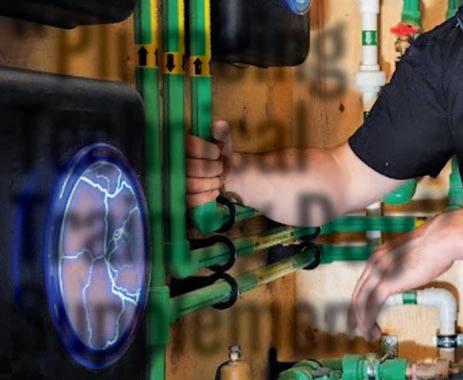
Ensuring the water quality entering the system is at its best can ensure the systems has a long lifespan.

n Water treatment 101
n DHW dedicated return lines
n Heat pump water heaters

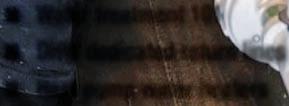














40+

Proper Installation Techniques
Carbon Filtration 6. Iron Filtration 7. Removing Odors and Gases 8. Reverse Osmosis Systems 9. UV Systems 10. Presenting the Benefits of Water Treatment to Homeowners



Worked with some of the industry’s leading companies Past member of the board of directors for EWQA and Sales Director for Canature WaterGroup


We know that people are looking for regular training for either themselves or for their staff. I can confidently say this as a little while back, we sent out a survey to our readers on various questions related to training. A total of 114 people responded to the survey.
Of those surveyed, 92 per cent answered that regular training was either extremely
important or very important. To put this into perspective, only seven per cent said that it was somewhat important and only one individual stated that it wasn’t important at all.
This survey helped shape the development of our Technical Training Days. We saw ourselves being in a unique position in the

industry, not a manufacturer, wholesaler, or contractor, but somewhat of a third-party that possesses intimate knowledge of this industry. This role allows for us to utilize our contacts within the industry and have experts come together to help fulfil somewhat of a gap in the industry.
Now, I am not speaking about training courses when I mention the gap. There are plenty of courses out there. Instead, we get to offer a collection of the fantastic resources already out there and help an industry that we are a part of.
When we asked our readers if they were interested in either attending or having an employee attend some kind of virtual training conference, more than 78 per cent (or 89 respondents) stated that they would be interested.
At this point, we knew that there was an interest. But the next part was making sure that the training itself was hitting the marks that were of most importance to our readers. We polled our readers on which topics they’d like to learn more about in terms of plumbing, hydronics, and HVAC/R. Since this is our Plumbing Technical Training Day, I will be focusing on the plumbing topics.
There was a slew of topics that we provided to the respondents, but the major ones were heat pump water heaters, plumbing troubleshooting, and tank versus tankless. We tried to take these points of interest and apply them the best we could to our Technical Training Day.
For each of the sessions that we run, we turn the presentation into an article to be published in the next edition of the magazine. Our next Technical Training Days will run and focus on the following: Refrigeration on June 26, Heat Pumps on Sept. 11, and lastly, Business management on Nov. 13.


Municipal water coming into a home should have some level of protection against hardness, disinfectants, and harmful contaminants.By John Cardiff
View the full presentation on “What’s in Your Water? Water Treatment 101” here:


Over the past several decades, the quality of water found at taps across Canada has come increasingly under scrutiny. Municipally treated water is required to meet the Guidelines for Canadian Drinking Water Quality set by Health Canada and the federalprovincial-territorial committee on drinking water; more and more Canadians are realizing that their water contains unwanted hardness, disinfectants, and, in some cases, harmful contaminants.
There are a few elements found within municipal water that should be removed, which includes hardness (magnesium and calcium), disinfectants (chlorine and chloramines), and harmful contaminants (PFAS, lead, microplastics, chromium, and others).
Approaching in-home water treatment with these three primary areas in mind can help give your customers water solutions that will protect the health of their family members and pets; prevent damage to plumbing, fixtures and water-using appliances; and give them optimal water for healthy hair and skin, sparkling dishes, and softer laundry.
The links between disease and exposure
to environmental pollution or chemicals are becoming better understood. Perand polyfluoroalkyl substances (PFAS), chromium, microplastics and lead are four harmful contaminants that all Canadians should be aware of and remove from their water.
As the most trusted water expert for your customers, be sure you take a wholehome approach to
treatment for
both
municipal water applications.
water
well
and
Since the early 2000s, PFAS, particularly perfluorooctanoic acid (PFOA) and perfluorooctanesulfonic acid (PFOS), have gained worldwide awareness as toxic chemicals with severe health effects from exposure or ingestion. PFAS are commonly

referred to as forever chemicals because they are among the most persistent toxic compounds in existence, contaminating everything from drinking water to food, food packaging and personal care products. According to the U.S.-based Environmental Working Group (EWG), they are found in the blood of virtually everyone on Earth, including newborn babies.
In October 2020, the EWG released a study that estimated more than 200 million U.S. households could have a PFAS concentration of one part per trillion or higher in their tap water. In April 2024, the U.S. Environmental Protection Agency (EPA) announced the final National Drinking Water Regulation for six PFAS, including PFOA (4.0 ppt) and PFOS (4.0 ppt). As part of the regulatory update, water providers must test for these PFAS and alert the public when levels are too high.
In Canada, the government has prohibited the manufacture, use, sale and import of PFOS, PFOA as well as products that contain these substances. According to Health Canada, many studies have confirmed the presence of PFAS in drinking water sources as well as tap water. PFOS and PFAS are
the most detected PFAS in Canadian water samples. In 2023, Health Canada released a recommended limit of 30 ng/L (30 ppt) for PFAS in drinking water – nearly eight times the EPA limit.
While lead is a more commonly known contaminant, Canadians may still be surprised to know it could be in their home’s tap water. A large source of lead in drinking water is a result of the widespread use of lead service lines to move water from municipal treatment plants to homes and businesses. Lead lines were installed throughout Canada until 1975 and the use of lead soldering for these lines continued until 1986.
Microplastics, extremely small pieces of plastic that are a result of degrading plastic garbage and industrial water, have links to severe health diseases, including asthma, pulmonary cancer due to inhalation, liver damage, nerve and brain damage, and kidney diseases.
Chromium has been linked to several health effects, including kidney and liver damage, abdominal pain, and respiratory cancer. While chromium does occur naturally, more than 70 per cent of it comes
from industrial and manufacturing processes, according to Health Canada.
Reverse osmosis (RO) is the best solution to remove contaminants from water. Health Canada specifically cites RO technology as an effective way to remove chromium from water in its Chromium in Drinking Water publication released in 2015. Customers who want to remove harmful contaminants from their drinking water can install a point-of-use RO system in their home. Commercial sized systems can be installed to provide wholehome membrane filtration.
When choosing a RO system, look for the NSF 58 certification. Systems certified to this standard have been tested and verified to meet their claims for contaminant reduction, structural integrity, TDS reduction performance, safety of materials in contact with drinking water, and efficiency rating. Within the NSF/ANSI 58 certification process, systems can be tested to verify reduction claims for specific contaminants, including lead, PFOS/PFOA, hexavalent and trivalent chromium, and radium. To find out if a system has been certified to reduce specific contaminants, check the system’s certification badge, product literature, or the certifying body’s website.
This is an example of a certification badge for a RO system that is certified to the NSF/ ANSI 58 standard and has been verified to reduce specific contaminants.

Example of a certification badge for reverse osmosis.
It’s well known that municipal water treatment plants use chlorine to treat raw water to make it safe for public consumption. While chlorine is an effective disinfectant that kills bacteria, viruses, and other microorganisms in water, it
Continued on page “23”

Continued from page “21”
can have unintended side effects like forming trihalomethanes when it encounters organic matter.
Recently, chloramines have become a popular water disinfectant. Both chlorine and chloramines, a mixture of chlorine and ammonia, can cause the formation of potent carcinogens N-nitrosodimethylamine and other N-nitrosamines in water.
Chlorine and chloramines are known to damage plumbing and pipes and can be harmful to humans and pets. These chemicals also degrade water softener resin, turning it into a jelly-like substance that can significantly restrict flow rates. Adding a carbon filter in front of a water softener will protect the resin.
The best all-around adsorbent available for removing organic chemicals and contaminants is granular activated carbon (GAC). GAC is made from high carbon-based materials such as coconut shells or coal and is well-known for its ability to remove chlorine, tannins, phenols, pesticides, tri-halomethanes (THMs) and toxic organic compounds from water.

grains/gallon (GPG) to be slightly hard; 3.5 to seven GPG to be moderately hard; and seven GPG or higher to be hard.

There are contact time requirements mandated for properly functioning granular activated carbon filtration.
Catalytic carbon is created by using a high-temperature gas process to alter the electronic and surface structures of activated carbon. This higher level of catalytic activity gives it the ability to reduce chloramines and hydrogen sulfide (H2S) in water. Regular GAC cannot remove chloramines. There are three types of in-home carbon filters: inline filters, dual inline filters, and whole-home filters (backwashing and non-backwashing). Whole-home filters offer the most contact time and chlorine or chloramine reduction.
The Canadian Water Quality Association (CWQA) considers water with one to 3.5
When recommending a water softener, make sure it has been certified to perform according to its claims. When looking at certifications, remember that NSF/ANSI 61 only requires conformance to material safety requirements. NSF/ANSI 44 requires conformance to softening performance in addition to material safety, structural integrity, capacity, and brine accuracy. In addition to the certification, look for one of these recognized testing bodies: NSF, IAPMO and WQA. Once a certified system has been chosen, taking the time to properly size the softener by looking at
Depending on where you are in Canada, the water coming into your building will have different levels of hardness.
the water composition (determined by a water test or analysis), the size of the house and the family’s water use is important to recommend the right one.
As the most trusted water expert for your customers, be sure you take a whole-home approach to water treatment for both well and municipal water applications. While municipal water applications have traditionally focused on softening hard water, carbon filtration and reverse osmosis systems offer an additional level of in-home protection that will give your customers healthy water and peace of mind. :

John Cardiff has been in the water treatment industry for 42 years starting with Water Conditioning Canada Ltd., now known as Canature WaterGroup (CWG). He is the executive vice president of sales and business development for North America. Cardiff leads CWG’s sales teams across all brands, customer service, and customer and employee training departments, as well as the commercial industrial engineering division.





1-519-364-7550 Hanover, ON

1-905-670-7966

Continental is recognized as an industry leader in Canada for our cold climate heat pump technology. Our new EQhub smart thermostat delivers efficiency and lower operating costs through fuel choice and time of use rates.*
Our hybrid systems are fully supported and eligible for federal and provincial rebate programs, benefiting homeowners. Count on our nationwide HVAC training and support for these innovative products to support the growth of your business.
Visit us at CMPX to learn about our diverse range of products and connect with our dedicated team.

1-800-267-2135







These dedicated return lines continuously circulate hot water from the water heater to each fixture, ensuring a higher rate of instantaneous hot water supply.By Francesco Lo Presti
Information taken from Rick Mayo’s, western product and application instructor at Taco Comfort Solutions, presentation on “DHW Re-Circulation Systems” on April 24. Watch here:
Is there anything better than turning on your shower and immediately feeling hot water wash over your body? I think it’s
safe to say that most Canadians can attest to this sweet luxury’s appeal, especially during our colder months.
Installing a recirculation system is one methodforensuringthattheoverallefficiency of the plumbing system is reaching your customers' expectations. At its core, it helps minimize water waste and provide the desired temperature quickly
The beauty behind recirculation systems is that there isn’t just one solution — various configurations can be utilized, depending on the user’s needs. To start, there are traditional recirculation systems. These consist of a dedicated return line that continuously circulates hot water from the water heater
to each fixture in the building. It should be noted that these types of systems can lead to increased energy consumption due to the constant circulation of hot water. Ensuring the system is appropriately sized can help mitigate this concern.
Another option is to design a partial circulation system. This system employs a pump at the water heater and a temperature controlled valve at the furthest fixture. The pump circulates water when the temperature at the farthest fixture drops below the set temperature, reducing energy consumption compared to the traditional method.
On-demand recirculation systems utilize a thermal sensor valve that opens to allow hot water into the cold water line when the temperature drops. The reason is that the

thermal sensor valve allows instant hot water delivery without needing a dedicated return line.
Get your pump on
The hot water circulation pump is like the heart of the recirculation system. It helps circulate hot water continuously, keeping the water in the pipes hot and ready to be used instantly at each fixture. The sole responsibility of the circulator is to have water at the fixture.
There are several ways to achieve instantaneous hot water depending on the layout of the building. In new construction projects, you will have full control over the design and layout of the building. However, in retrofit projects, you are dealing with a layout already created.
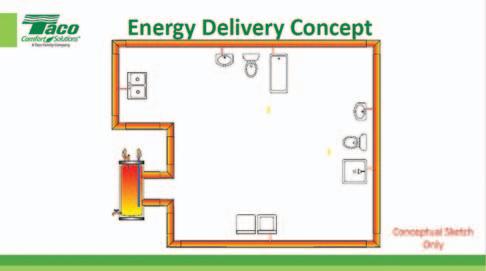
In Figure 1, you can see the hot water tank’s energy delivery through the system. In that delivery, the energy is taken and directed to close proximity of everything the hot water serves. To make this concept more efficient and effective, it is crucial to think of the system as an energy delivery system that puts the source right next to where you want to use it. This can be referred to as fixture groups.
If it’s broken, fix it
Now, let’s look at what happens when a system fails. A system can fail due to various factors, such as having sprays or leaks. The reasons why a system fails varies, however there are four common reasons — elevated water temperatures, fluid velocity moving through the pipe, added chlorines, and continuous circulation.
It is worth noting that the velocity of the fluid can be controlled when moving through the pipe. There are ways to slow the water down. A key area of focus is ensuring that the circulating pump is not oversized and that the return piping is not undersized, as both are common occurrences in installed piping systems. This is crucial in controlling the velocity of fluid moving through the pipe. You can see an example of how to properly size the pipe for the GPM maximum flow in Figure 2.

of the supply portion of the system to the hot water fixture. If done correctly, and the numbers are accurate, that will provide you with the minimum flow required to overcome the line losses. This will become a continual GPM requirement, resulting in the pump running continuously. Most people will typically use this consideration as the main source of determining the GPM.
The beauty behind recirculation systems is that there isn’t just one solution — various configurations can be utilized, depending on the user’s needs.
Two things need to be determined when properly sizing the circulator — finding out what the GPM is and establishing the feet of the head. There are six steps or considerations you can use to determine what the GPM is. The first step would be figuring out the line or heat losses
Secondly, how quickly do you purge the lines? If the circulator is shut off and turned back on, how quickly do we need to evacuate all that tepid water and bring the hot water system back up to a usable temperature? The third consideration is understanding the maximum velocity limitation based on the material inside the system.
Another consideration is the minimum flow through mixing valves. If you are using tankless units, you will also need to consider the minimum flow requirements. You will also need to figure out a strategy to control the pump.
These six considerations will drive the GPM requirement. However, as long as you are insulating the hot water piping system and the dedicated returns, the heat losses will generally be the lowest GPM number, and you could only use that as your criteria number. Once you have the GPM, you can determine the accurate number of feet of head. :
Natural Gas Alternatives for Electrification
Trusted Performance, Quality and Reliability
Reduces Energy Consumption Over Comparable
Natural Gas Systems
Strong Canadian Customer Support Team







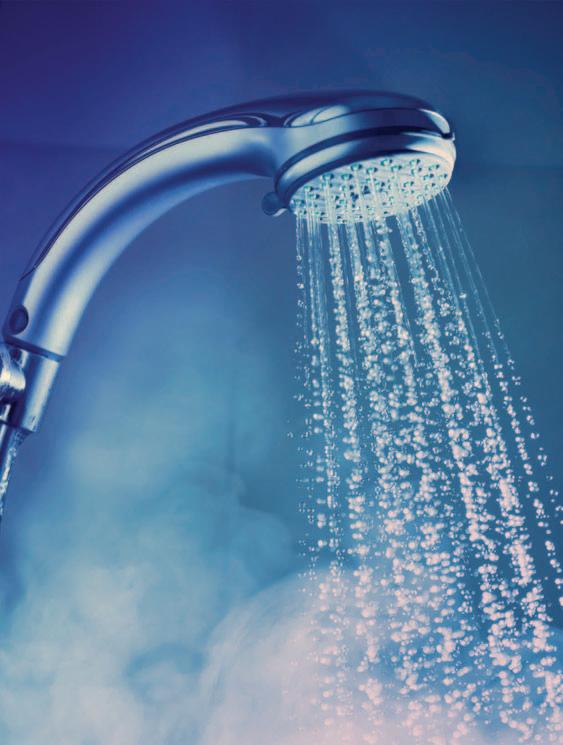











McDonnell and Miller, Morton Grove, Illinois, introduces its electric low water cut-off product line featuring its GuardDog
RB-24SE and GuardDog RB-122E for hot water boilers. The RB-24SE features a universal wiring harness and 15,000 ohms probe sensitivity. The RB-122E features a primary cut-off and 20,000 ohms probe sensitivity. Both GuardDog’s feature McDonnell and Miller’s patented self-cleaning probe and are designed per UL353/1998 standard. McDonnell and Miller are a Xylem Brand. Xylem www.mcdonnellmiller.com

General Pipe Cleaners, McKees Rocks, Pennsylvania, debuts its Cold-Shot pipe freezing kit. The kit allows for the repair of an operating water system without draining lines, sprinklers, or hot water systems. Using CO2 in dip-tube cylinders, the Cold-Shot freezes liquids in steel, copper, cast iron, aluminum, or plastic pipes –1/8-inch through two-inch in diameter. The Cold-Shot kit includes 10 sets of freeze heads, two high-pressure spiral hoses with grips and injectors, a T-distributor, a locking nut, a hex head screwdriver, rubber gloves, goggles, and a carrying case. General Pipe Cleaners www.drainbrain.com

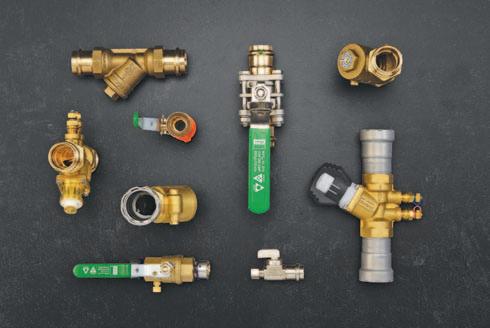
Viega, Broomfield, Colorado, expands its valve portfolio by introducing 21 valves across the ProPress, MegaPress, and PureFlow systems. The new valves include swing check valves, strainers, brass ball valves, a ProPress three-way mixing valve and a three-piece ball valve.
Viega www.viega.com

Jim Alkaline Technologies, Westfield, Massachusetts, introduces the V-200, the company’s latest vertical mount condensate neutralizer solution. The V-200 model is specifically designed for wall-hung condensing installations (i.e., wall-hung boilers and tankless water heaters) in single and multi-unit residential applications with limited available floor space. The V-200 provides installation flexibility with two optional outlet ports, enabling versatile outlet piping configuration.
Jim Alkaline Technologies www.jimalkalinetech.com
Caleffi, Milwaukee, Wisconsin, adds a new product to their fleet of balancing products. The 145 Series Flowmatic pressure independent control valve (PICV) combines an automatic differential pressure regulator and a control valve with an optional actuator. With a control signal input, the Flowmatic automatically adjusts the flow rate and keeps it constant under changing circuit differential pressure conditions. The valve is available in 1/2-inch, 3/4-inch, and one-inch valve body sizes with sweat, press and FNPT union tailpieces. Caleffi www.caleffi.com
Milwaukee Tool, Mississauga, Ont, debuts its newest tube-cutting appliance. The M12 Brushless 1-1/4-inch to two-inch copper tubing cutter automatically adjusts diameter to cut type K, L, and M copper pipes from 1-3/8-inch to 2-1/8-inch. Featuring a rotating head, the M12 delivers over 100 cuts on a singular charge from a Milwaukee XC 4.0 battery. The M12 has a maximum cutting diameter of 2-inch, a maximum RPM of 325 and a minimum cutting diameter of 1.25-inch. Milwaukee Tool www.milwaukeetool.com
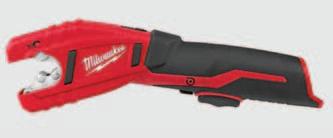
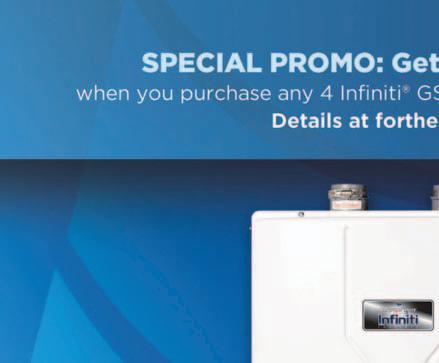

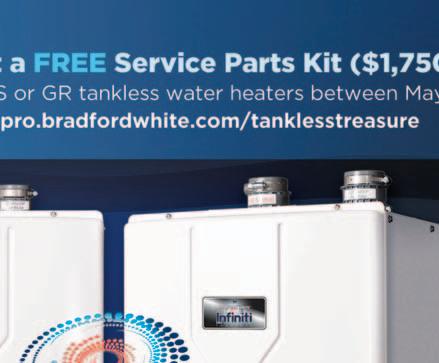




Every contractor needs a go-to tankless that can tackle just about any job. That’s what we had in mind when we engineered the Infiniti® GS & GR tankless gas water heaters. They’re flexible and easy to install in many configurations.
• Residential and Commercial applications
• Robust stainless steel heat exchanger for longer life
• Cascade and common venting between standard and recirculation models
• ENERGY STAR® certified and Certified Green Product™ by the Green Restaurant Association

See how we built a better tankless

Air-source
heat pump water
heaters can deliver high water temperatures, with high efficiency even when operating in areas with low ambient temperatures.By Francesco Lo Presti
Information taken from Gary Chang’s, lead engineer of the HVAC division at Mitsubishi, “Plumbing Technical Training Day” presentation on April 24. Watch here:

Hot water is a commodity everyone values and needs. Having that instantaneous hot water when you turn on your shower is the goal. There are technologies in the market that can not only provide on demand hot water, but also provide energy savings while doing so – air-source heat pump water heaters that utilize CO2.
Statistics Canada reports that in 2017, Canadians used an average of 75 litres of hot water every day. This includes showering, washing dishes, and cleaning clothes. Additionally, water heaters account for 19.3 per cent of the energy used in Canadian homes and 5.7 per cent of the energy used commercially. It is also safe to assume that since these are pre pandemic numbers, the amount of hot water and energy used in homes increased during and after the pandemic.
Now that we have a rough idea of how much water and energy we are typically using in the home and in the office, let’s take a look at the different hot water heaters in the domestic hot water market.
First is the traditional natural gas boiler; arguably the most common technology. Due to the frequent starting and stopping of the boiler, this technology produces a high amount of CO2 and NOx emissions, resulting
in greater greenhouse gas emissions. Next up is the electric water heater. This unit is fairly simple to install and while there are no greenhouse gas emissions, it consumes significant amounts of electricity.
CO2 air-source heat pump
water heaters represent an important technology in sustainable building design.
The air-source heat pump that we are focusing on utilizes a refrigerant, in this case CO2, plus a compressor to absorb ambient air temperature to generate hot water. Essentially, this system is harvesting heat from the air and transferring it into water.
How it works
CO2 heat pump water heaters utilize carbon dioxide as the refrigerant in a closed-loop system to extract heat from the
Continued on page “32”

Figure “A” is a representation of a typical configuration. It is intended to work in conjunction with a heat exchanger and a primary storage volume to fulfill domestic hot water needs.
Continued from page “31”
surrounding air or water. This absorbed heat is then transferred to the water, raising its temperature significantly.
Air-source heat pump water heaters work by applying electricity to run the compressor, which moves the refrigerant across the outdoor coil to take heat from the outside air, which is then pushed through the heat exchanger. On the cold-water side, you have your cold-water supply from the city, which is stored in the hot water tank, providing hot water on demand.
When it comes to energy efficiency, CO2 heat pump water heaters often achieve higher COPs than the previously mentioned hot water heaters. CO2 heat pump water heaters can achieve a COP between one and three, electric heaters a COP of one, and a conventional gas boiler typically achieves a COP of just under one. However, it is important to remember that COP can vary depending on the outside air temperature.
CO2 heat pump water heaters also offer a greener alternative by reducing carbon emissions. With zero ozone depletion potential (ODP) and a global warming potential (GWP) of one, CO2 refrigerant has a significantly lower impact on the environment compared to traditional refrigerants such as
hydrofluorocarbons (HFCs).
When it comes to the transcritical cycle of CO2, it has a higher pressure compared to R-134A. This means that the CO2 refrigerant can remain in a vapour state during the heating cycle, allowing for more heat to be transferred.
There are different systems depending on the level of Delta T required. For the most efficient serving storage tanks where high Delta T is required, you would have a single-pass system with high lift. Single pass means that cold water will go in through one heat exchanger, allowing for a high lift of temperature.
For example, if the cold water supply from the city is 10 C or 15 C, this system can convert the heat taken from the air and heat the water as high as 65 C to 75 C. This is ideal when charging hot water for daily use. You will see the single pass with high lift system used in commercial spaces such as condominiums, gyms, hotels, etc. Whereas a multi-pass system is ideal for the constant flow of hot water recirculation. In this system, you will have lower Delta T but higher GPM. When it comes to the configuration of a high lift system, you will have your primary side with the air-source heat pump water heater, secondary side with storage, and re-
circulation with a swing tank. There will be a heat exchanger between the primary and secondary side.
Next, we will take a look at how to properly size an air-source heat pump compared to a conventional natural gas boiler As per the DHW heating design manual by ASPE, there are two rules to follow for the conventional method Conventional water heating equipment in multifamily buildings is based on either the 30/3 guideline (systems with generators and storage tanks) or the five-minute peak demand (for instantaneous systems.) The 30/3 refers to 30 minutes of generation/storage for 3 hours of use.
To size this system, you first need to determine the low, medium and high water demands
For sizing refrigerant-based water heaters, like the CO2 heat pump water heaters, you will be focusing on the operating range, which is longer and higher compared to the conventional method. Traditionally, the operating range for refrigerant based water heaters is between 12 to 18 hours
The reason for this is the CO2 systems come with a compressor, allowing the system to run for longer periods of time, versus turning it on or off.
The designer must also select the total heating output of the air-source heat pump heater to meet the required capacity output at the coldest design outside ambient temperature. Thestorage needs to be able to deliver the calculated peak hot water demand as well as considering the required recovery time for the intended use.
The installation location of the air-source heat pump is also important. These units should be placed outdoors to eject cold air into the ambient environment.
CO2 air-source heat pump water heaters represent an important technology in sustainable building design. As the world moves toward decarbonization for a greener environment, CO2 air-source heat pump water heaters provide a key solution to reducing carbon emissions in commercial buildings and more energy-efficient future. :
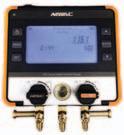
Navac, Lyndhurst, New Jersey, launches its NX1 Nexus digital manifold gauge. It combines smart device technology with Bluetooth and wireless connectivity to enhance diagnostic processes for HVAC professionals. It integrates with the myNavac app, enabling remote control and monitoring. The gauge can deliver insights such as temperatures, pressures, and vacuums for versatile applications. It features four operation modes: manifold mode (designed to resemble a traditional manifold gauge), leak test mode (users can access live wireless pressure readings and track changes), evacuation mode (allowing users to monitor evacuation status), and decay test mode (monitoring of the vacuum decay at any point of the system). The NX1 Nexus is A2L ready and compatible with 72 types of refrigerants. Navac www.navacglobal.com
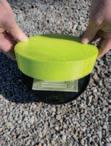
Introducing Lime-Set, a new product that is designed for the mechanical contractor. The two-piece patented system is easy to use — place the Lime-Set base plate under the floor drain/cleanout, tighten the floor drain/cleanout to hold the base plate in place and put the Lime-Set cover
on. This piece can be trimmed to the desired height before pouring concrete. Once the concrete is poured, the floor drain/cleanout can be found with its lime green exterior. When the flooring contractor comes to install flooring, simply cut the Lime-Set cover, discard and thread the floor drain/cleanout up to match the finished flooring height. No more chipping, grinding or buffing. Lime-Set www.lime-set.com


Flir, Wilsonville, Oregon, announces the Extech BR450W series of video borescopes for inspecting difficult-to-reach targets in building, automotive, and plant maintenance applications. The two models, the BR450W-D dual HD wireless and BR450W-A2 two-way articulating wireless will provide users with remote control and display, documentation, sharing options, and an intuitive user interface for troubleshooting. The BR450W series connects via Wi-Fi to the Extech ExView app for remote viewing. Users can capture images, videos, and audio recordings through the app. The app offers an optional side-by-side view for troubleshooting and can host multiple meter connections to iOS and Android tablets or phones. The BR450W-D dual HD wireless video borescope is designed for HVAC, hard-to-reach electrical, attic, and crawlspace inspections. Flir www.flir.com
















QuietComfort® 96 Variable-Speed
Gas Furnace with Two-Stage Operation (G96VTN)
• Up to 96.7% AFUE
• 60,000 – 120,000 BTUh
• Lifetime Heat Exchanger Limited Warranty+
• 10-Year Parts Limited Warranty*
QuietComfort® Compact Heat Pump (DLCURA)
• Up to 18 SEER2 / Up to 12.4 EER2 Cooling
• Built-In 24V Interface
• Traditional Line Sets
• 10-Year Parts Limited Warranty*
June 26, 2024 • 12-5pm EST
Quality Technical Training
No sales pitches!
Engaging sessions
Answer live quizzes and ask questions
Networking Speed meetings, social media lounges, breakout rooms Win Prizes Gamification challenges Live Demos
Don’t miss your chance to learn, network, and win! Register now.Only $25! Save 50%
More Details: www.accelevents.com/e/hydronics-technical-training-day






American Standard’s Aspirations™ EcoStrength™ toilet leads the industry in water-savings and flushing power with its advanced vacuum-assisted technology.
50% less water consumption*
Reduced unpleasant buildup
More comfort and accessibility
Easy installation
Multiple trip lever finish options
Promise of dependability
Available at NEXT Supply along with a wide selection of other American Standard products.

CO2 compressors were used on a direct expansion spiral freezer, historically this application would have likely used R507.

The refrigeration industry’s ability to implement and service new technology relies on intelligent technicians investing in the work they do.By Greg Scrivener
A couple of weeks ago I had the opportunity to visit a good friend who has been in the refrigeration industry for many years. I was unexpectedly jealous looking at the old refrigeration book collection he had proudly displayed in his home office. The collection had textbooks dating back to the 19th century and what looked like almost ever ASRE and ASHRAE handbook ever published. This is for sure an exaggeration, but regardless, the collection was quite impressive. I spent
several minutes looking through some of the really early industry textbooks and some other literature and it occurred to me that we should really appreciate how much change is happening right now.
It’s sometimes hard to see when you are in the middle of it, but I don’t think that in its entire history, the refrigeration industry has ever had to handle so many things changing
Continued on page “39”




+ FlashShield+ minimizes risk in comparison to any yellow CSST with the elimination of bonding and incidental contact with metallic building systems.
+ No bond wire or clamps are necessary, resulting in fewer call backs and/or red tags from inspections. Installs are quicker and material costs reduced.
+ Faster installs in closed-off joist spaces. No issues with minor contact with sprinkler pipe, ductwork.
+ Black jacket of FlashShield+ is aesthetically pleasing, especially in residential installations.










Figure 1: Google search trend for the term “heat pump” in Canada from 2004 until May 2024.
Continued from page “37”
and developing as it does right now After decades of relatively stable technology with a somewhat typical technological progression from the 1950s to the 2000s, the industry has had to change and adapt quickly
As you changed oil on yet another CFC to HFC conversion in the late 1990s, you could probably be forgiven for thinking that most change is behind you. Sure, we still had some R12unitsoutthereandthereweresomepesky interim blend refrigerants (like MP-39 left to deal with, and the industry has yet to deal with the R22 phase out, but for commercial refrigerationsystemsatleast,R507andR404a were established as the refrigerant of choice for new installations. These “new” HFCs worked well and may have lulled some people into thinking they would become the new normal For those people, the announcement from Chemours a couple of weeks ago that they were immediately stopping all sales of R404A,and R507 in the U.S. would have been a bit of a shock
The transition to lower GWP refrigerant continues and will continue for quite a long time. We talk in this column regularly about the introduction of A2L refrigerants and all the associated code changes our industry is dealing with. Having been involved in code development extensively over the last two decades, I can say that the pace of change has never been higher than it is now It is
almost impossible to keep up unless it is your full-time job, and it is becoming difficult for designers to understand how to design new systems that are not in danger of being noncompliant due to future changes.
Even as we transition to A2Ls in several applications, there is some indication that many of them will not be here to stay either. First, there is the increasing drive to reduce GWP even further (for example, R32 has a GWP of 675, not zero).
I don’t think that in its entire history, the refrigeration industry has ever had to handle so many things changing and developing as it does right now.
Second, many of the new refrigerants contain perfluoroalkyl and polyfluoroalkyl substances (PFAS), which are known colloquially as “forever chemicals.” There has already been proposed regulation in Europe to ban many of the new refrigerants because of this. The debate about the actual dangers of PFASs is well beyond my expertise and outside of the scope of this column but suffice it to say that there is still a lot of uncertainty in the future application of synthetic refrigerants.
Perhaps one of the most fascinating changes happening to the refrigeration industry is the increasing application of heat pumps. Applications that include operating at temperatures well in excess of normal – there are now heat pumps that can create steam! In addition, there are applications that include extracting heat from source temperatures well below normal. My house, for example, has an air-source heat pump that functions and provides adequate heat all the way down to outdoor temperatures of -30 C. Heat pumps are now used in clothes dryers, water heaters, and vehicles. Their role in electrification and the decarbonization of our energy consumption is basically impossible to ignore; this can be seen by the ever-increasing trend of online heat pump searches shown in Figure 1.
Heat pumps are definitely not new, but the extended and new applications are driving some amazing technology. Multi-stage scroll compressors, complex advanced refrigeration cycles, and non-frosting coils, just to name a few.
Just like heat pumps, carbon dioxide (CO2) refrigeration is not a new technology. In fact, there was reference to CO2 in some of the old books I mentioned in the introduction. That said, the technology was not widely used for a century. Now, we are fully in the middle of a
Continued on page “41”
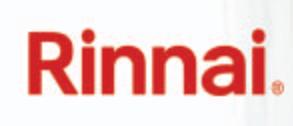

From commercial-grade units to super high-efficiency models designed for small to large homes, Rinnai® delivers unparalleled performance and reliability.
Embrace the future of heating solutions with Rinnai!
Complete line available through Marks Supply, your best business partner.



Stainless piping was required on this installation that utilizes CO2; working more frequently with welders is one of the changes that the commercial refrigeration industry is seeing.
Continued from page “39”
CO2 renaissance.
In the early 2000s, CO2 started re-emerging in Europe as a potential for grocery store type applications. For several reasons, one of which was the need to switch R22 ice arenas to a different refrigeration in a regulatory environment not favourable to ammonia. Several manufacturers emerged building CO2 refrigeration systems in Quebec. They were the first manufacturers in North America and even though today the original companies are either gone or have been purchased by larger international or U.S. organizations, Quebec remains central for CO2 expertise and manufacturing.
As we have discussed several times in the past, using CO2 as a refrigerant comes with a lot of challenges. The pressure is very high, they operate super-critical, and the systems are not very efficient at high ambient temperatures. The list of challenges is long. But, to the optimist, challenges equal opportunity, and over the last decade, the industry has developed components and
technology to address a lot of the concerns. When I did my B.Sc. capstone design project using refrigerant ejectors, I had absolutely no idea I would see that technology in real life. However, right now you can buy systems with ejectors being used to increase their efficiency (incidentally, and to be clear, this was not because of anything I did). Today, a significant portion of grocery stores and larger refrigeration systems in Canada are being installed using CO2 and if my dayto-day experience is any kind of a reliable indicator, the use of CO2 is going to continue to increase.
This all brings me to what I believe is the industry’s biggest challenge: people. It is the same challenge facing most industries and unfortunately, it is affecting the trades and technical industries to a much higher degree. Our ability to implement and service new technologies relies on smart people who have boots on the ground and are invested in the work we do. Unfortunately, it seems we are not doing the best job we could figuring out
how to get people in these positions and I can see that the post-covid work from home reality that exists for knowledge workers is continuing to put negative pressure on the recruitment of young people for physical work. The topic of recruitment and retention of Gen Z technicians is one that will take many forms over the next several years and perhaps I’ll give my two cents soon. In any case, just remember that the ‘kids’ today are the technicians of the future, whether you like it or not and we need to figure out how to help them manage and succeed through all these changes. :

Greg Scrivener is the lead refrigeration engineer and a partner at Laporte Consultants, Calgary, and works throughout Canada and the U.S. He is a professional engineer and journeyperson refrigeration mechanic. He can be reached at GScrivener@laporteconsultants.com

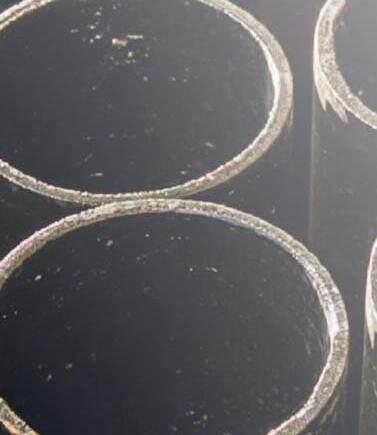
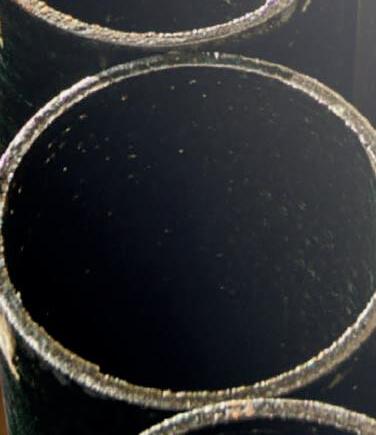





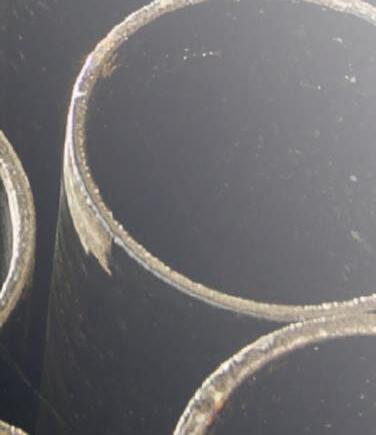
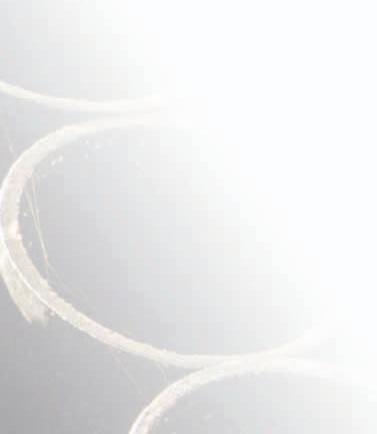


Attendees at the CWQA annual general meeting and business symposium were able to participate in educational seminars and walk around the tradeshow floor.
The Canadian Water Quality Association held its annual general meeting and business symposium on May 8 at the DoubleTree by Hilton in Kitchener, Ont. The first day of the conference featured a tradeshow, annual general meeting, presentations, and a reception that featured cocktails and food stations.
The event extended into May 9 with three excursions. The day began with a tour of the Walkerton Clean Water Centre, where attendees were shown around the training facility. Next on the itinerary was a visit to Cowbell Brewery. Attendees got to share a pint or two, alongside a lunch provided by the brewery. Following food and drinks, small groups were able to see the process that goes on behind the scenes. Lastly, the day ended with a tour and educational presentation at Compass Minerals.

Representatives from Enwave, Creative Energy and Corix sat on a panel and discussed low-carbon energy solutions.
The Ontario Geothermal Association (OGA) held its biannual business conference at Mohawk College on May 22. More than 300 attendees participated in educational sessions, networking opportunities, and panel discussions.
Titled, “Geothermal: The New Normal,” the event focused on bringing together industry stakeholders, such as municipal advisors, HVAC/R technicians, consulting engineers, designers, developers, educators, and utilities.
Attendees heard a slew of presentations throughout the day, but the main theme of the conference was about how the geothermal industry can help Canada reach its climate change goals by 2030 and 2050.
The event ended with a cocktail reception with complimentary food and drinks. Paul Frith, president/founder of Paul Frith Consulting and an OGA board member, highlighted that next year, he wants the conference to go even bigger, with 500 attendees.
Accessing and preparing the grid for heat pumps, labour force challenges, and new federal government programs without energy audits; these were some of the main topics discussed at the Heat Pump Symposium, held at the Vancouver Convention Centre, Vancouver, B.C.
Created and run by the Heating, Refrigeration, and Air Conditioning Institute of Canada (HRAI), the sold-out event taught attendees about the latest equipment, current regulatory trends and incentive programs, and learned about the benefits of selling heat pumps to residential and commercial customers.

Andrew Dyke, vice president at Barclay Sales, formally welcomed attendees to the Heat Pump Symposium in Vancouver, B.C.
Throughout the rest of the day, there were panel presentations, breakout sessions, time to walk around the tradeshow, and networking opportunities. The day ended with a reception and cocktail hour.
The HVAC industry is making a momentous transition to alternative refrigerants to meet Global Warming Potential Requirements. Manufacturers will need to meet the latest safety requirements to UL 60335-2-40 for certification.
Contact our experts today to learn more.
+1 800 WORLDLAB (967 5352) icenter@intertek.com Intertek.com/HVACR
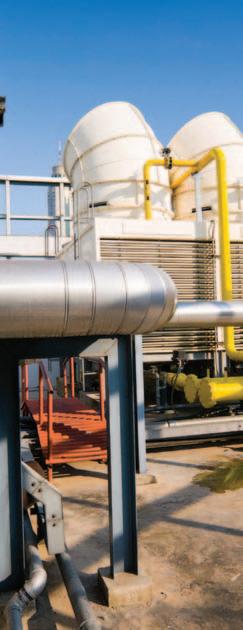



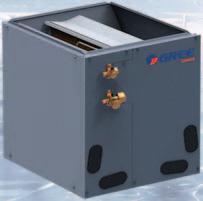


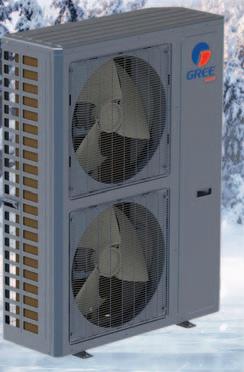
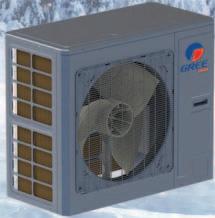



HIGH-EFFICIENCY CENTRAL HEAT PUMPS WITH CASED COILS


OFFICIAL DISTRIBUTOR IN CANADA
Heat pump combination AHRI Certified for installation with ANY 3rd party furnace.



COLD CLIMATE DC INVERTER HEAT PUMP
Two-stage, two-cylinder compression and hot gas injection for unparalleled heating efficiency.
Eligible to financial incentives in certain provinces, contact us for more detail.


TO FULLY SUPPORT OUR DEALER NETWORK
*GREE Canada is not responsible for warranty on units sold outside GREE Canada’s sales channel.
For more detail, contact our team at proservice@gree.ca

Eden Energy Equipment has been acquired by Michael Ridler, the company’s current general manager, in partnership with Sugar Maple Capital Inc.
“Eden is an important and strategic partner to all its stakeholders,” said Kamal Pastakia, managing partner of Sugar Maple Capital. “Eden’s talented and customer-focused team provides highly technical sales support and training services to meet the needs of both the premium equipment vendors it represents and its highly regarded contractor dealers.”
Established in 1981, Eden distributes HVAC equipment, accessories, and service parts. Eden’s product offering encompasses geothermal and air-to-water heat pump systems, hydronic systems, thermal battery solutions, ventilators, and all supporting
The

accessories and controls.
After 30 years, owner and president Grant Blackmore will transition to enterprise accounts and become a strategic owner of the company.
“Grant, with his wisdom, dedication and unwavering support, has been instrumental in shaping my professional journey, and I welcome his continued mentorship. I am also filled with excitement for the opportunity to build on his legacy and lead with the same passion and integrity,” said Ridler.
Ridler has been with Eden for over 20 years, working in various sectors, including shipping, customer service, technical support, operations, and technical services manager. He also provides hydronic training.
In the fall of 2023, Ridler was named general manager of Eden.
Taco Comfort Solutions welcomes Tim Main to the family as its new regional sales manager for commercial in Canada. Main brings a wealth of experience, having previously worked in various roles at Xylem for over 14 years. “We are excited to have Tim on board and look forward to the energy and expertise he will bring to our team,” shares Taco on its social media platforms. “Please join us in giving him a warm welcome!”
The Heating, Refrigeration, and Air Conditioning Institute of Canada (HRAI) announces a new addition to its team. Domenica Barona has joined HRAI as its boards, administration, and office coordinator.


(From left to right) Grant Blackmore, Michael Ridler, Kamal Pastakia, and Shane Magee and pose together to celebrate the acquisition.
Sugar Maple Capital is a private equity group that partners with owners of wellestablished Ontario companies to help them transition to the next stage. Pastakia and Shane Magee are the managing partners and owners.

Drew Cameron joins Viessmann as its academy trainer. Cameron comes from over a decade of service experience in the industrial gas and refrigeration industry. He has his Gas One certification as well as his 313A commercial refrigeration mechanics license. After many years of servicing equipment in the field he entered the realm of manufacturing to become a technical specialist and trainer for heating and refrigeration equipment.

Kathryn Fisher receives this year’s Water Quality Association Next Gen award. Fisher is a certified specialist for A.O. Smith’s North America water treatment and has many years of experience working directly with water filtration regulatory agencies.
Rehau announces the appointment of Michael Nicholson as the director of floor heating for North America. He will be reporting from the Minneapolis office. Nicholson brings over 30 years of experience in business development and marketing and will lead the heating and cooling business unit.




Bradford White announces that Gino DiNezza has been promoted to director of sales for eastern Canada and national sales manager of specialty products. In his new role, DiNezza will be responsible for all sales across eastern Canada and will maintain his national responsibilities for boiler sales and tankless water heaters. Damon Williamson has been promoted to district sales manager for Ontario for all products across Bradford White’s portfolio. Williamson joined Bradford White in August 2022. Graeme Gilbert has accepted a new position as business development manager for national accounts. In this role, Gilbert will be responsible for growing the company’s national accounts business, including rental companies, builders, facilities, and contractor buying groups.
Fun, revelry, and a little bit of merrymaking is anticipated as the plumbing and heating industry takes over Kelowna for the Canadian Institute of Plumbing and Heating’s (CIPH) annual business conference (ABC) this June.
Running from June 15 to 18 at the Hotel Delta Grand Okanagan Resort, Kelowna, B.C., the conference offers an opportunity for manufacturers, wholesalers, representatives, and other industry professionals to connect, network, and engage in educational conversations. The previous ABC was held in St. John’s, Nfld., where over 300 guests attended.
This conference will mark the first held by newly minted CEO, Satinder Chera, following the retirement of long-time president and general manager, Ralph Suppa.
CIPH’s annual conference is known for its networking activities, and this year’s conference won’t disappoint. There is a slew of engaging activities scheduled for attendees and their companions, including a bike tour of Myra Canyon and a craft beer, cider, distillery, and winery tour on June 15.
The formal “Welcome to Kelowna” dinner will be held on the grand terrace shortly after the welcome reception and new delegates’ reception on June 16.
The first speaker of the conference will provide attendees with a behind-the-scenes glimpse of the 2023 McDougall Creek wildfire on June 17. Jason Brolund, West Kelowna fire rescue chief, will share the story of the massive emergency response, the communities’
resilience, and what to expect after a major emergency turns the world upside down. Companions will have the chance to tour Quails’ Gate Winery all morning on June 17.
While the companions enjoy their morning, business sessions will officially commence.
The first, titled “The Future in Unity: Potential
This conference will mark the first held by newly minted CEO, Satinder Chera, following the retirement of long-time president and general manager, Ralph Suppa.
– How to Connect What’s Already There for Exponential Impact,” will explore leadership practices on ways to navigate uncertainty and connect the potential within, between, and around yourself for exponential impact, reports CIPH.
Following a short networking break, the morning wraps with the second business session on “The Future in Unity: The Stakes are High for Monetary Policy.”
The rest of the day will be dedicated to fun
excursions. All afternoon, attendees will be able to participate in one of three events: a golf tournament, ziplining, or a boat tour. During the evening, attendees and companions will walk over to King Taps Restaurant for the “Fun Night Reception and Dinner,” where they will be entertained by local musician, Jon Bos Band and enjoy some food and drinks.
The conference wraps up on June 18 with its 92nd annual general meeting, which runs directly following the breakfast speaker’s presentation on utilizing our natural resources for energy production.
Common during most CIPH ABCs, attendees will learn a bit more history about the province the conference is being held. This year’s presentation will focus largely on John Turner, Canada’s 17th prime minister. Following the keynote speaker, a luncheon will be held for all hydronic professionals.
The conference wraps up on June 18 with the annual chair’s banquet, where attendees put on their best dress or suit and enjoy a formal dinner.
CIPH’s next ACB will be held from June 29 to July 1 at the Fairmont Tremblant in Mont Tremblant, Que. See you there!
June 16 - 18:
CIPH ABC 2024, Delta Grand Okanagan Resort, Kelowna, B.C. For more information, please visit www.ciph.com.
June 26:
Refrigeration Technical Training Day, Virtual webinar. For more information, please visit www.accelevents.com/e/ Refrigeration-Technical-Training-Day.
Sept. 22 - 24:
HRAI 2024 AGM & Conference, Fairmont Vancouver, B.C. For more information, please visit www.hrai.ca.
Sept. 24 - 25:
Canadian Hydronics Conference 2024: River Cree Casino, Enoch, Alta. For more information, please visit www.ciph.com.





































































Our latest wall-hung & floor standing boiler, the perfect fit for commercial needs.




Receive all the latest product information directly in your inbox. Sign up for our email newsletter.









Easy to install featuring low weight and compact size.
Market leading thermal efficiencies up to 99%. py y ur email newsletter. ewslett





















